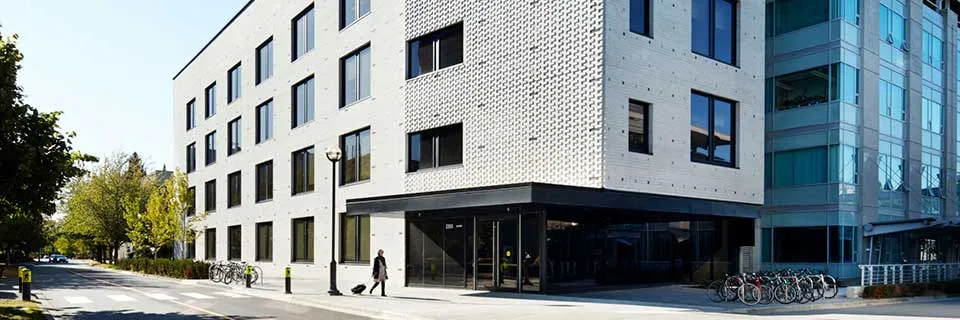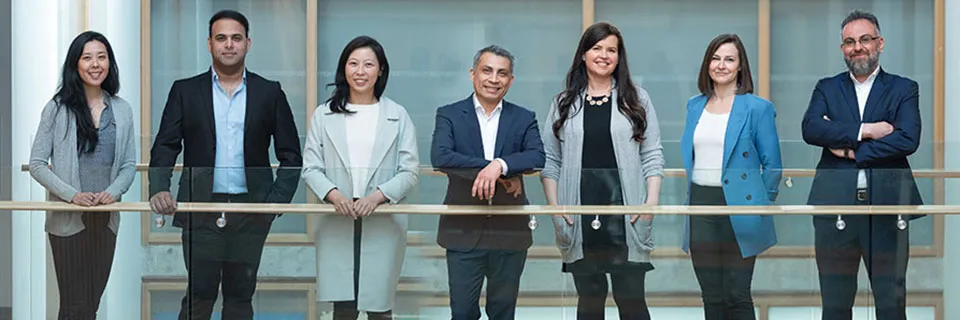The Smart Hydrogen Energy District (SHED) is this city-block-sized development, launched in June 2024 that will enable industry and government partners to advance their understanding of how to optimize the integration of energy demand and zero-emission energy production in urban settings.

It’s the big challenge: how do we translate innovations into widely adopted deployments? And how do we do this quickly, so that economic, productivity and environmental benefits are generated sooner rather than later?
UBC’s Campus as a Living Lab approach provides one potential pathway. Operating as a quasi-municipality with authority over energy and water service delivery, land development and building permitting, the university has the freedom to experiment and test innovations in real-world environments.
Smart Hydrogen Energy District
Reducing risk

For industry and government partners, SHED offers a unique opportunity to test out ideas before rolling them out across communities, cities and regions.
“Using our campus as a living lab, and enabling new platforms to accelerate technology readiness, we have fostered an environment that attracts industry investment in co-developing tangible proofs of concept, critical for commercialization and economic development,” says Dr. Walter Merida, Associate Dean of Research and Industrial Partnerships at UBC Faculty of Applied Science.
Dr. Merida and his team have led the development of SHED, a city-scale platform for energy system design.
Funded through both private sector and government investments, this transformative project will accelerate our understanding of technology performance, business model viability and community usage and adoption.
SHED includes a solar rooftop on the parkade that generates electricity to power an electrolyzer and produce green hydrogen. The hydrogen can then be used to power light- and heavy-duty hydrogen fuel cell vehicles or blended with natural gas to lower carbon emissions. SHED also includes bi-directional charging for electric vehicles, which can potentially transform the parkade into a large-scale energy storage system.
The integrated system can also leverage UBC’s 5G network capabilities, and is an ideal platform for testing community-scale transitions to net zero.

Partner with us to advance your initiative

SHED is a one-of-a-kind resource for organizations who want to test and de-risk their technology and business models and better understand factors that impact widespread uptake and adoption.
To date, partners including HTEC, Siemens and Powertech have contributed technologies to the demonstration platform, empowering them with valuable insight into their products and potential applications.
“SHED offers unique opportunities for industry and government collaboration,” says Dr. Merida.
“Industry partners can explore breakthrough technologies in the context of an integrated system. Utilities can benefit from a mid-scale installation in a low-risk demonstration site. Cities can be partners in pilot projects for economic development, while governments can develop evidence-based policies for clean growth.”
Take advantage of the campus as a testbed

As exemplified by SHED, the UBC campus represents an incredible opportunity to test ideas in real-world demonstration projects and gain critical insight before rolling them out more broadly.
There are many other examples of the success of this model, including:
- The multi-year, multimillion-dollar partnership with Rogers Communications, which has enabled Rogers to leverage the resources of the UBC campus and its researchers to identify and test opportunities for 5G across industry sectors
- The Bioenergy Research and Demonstration Facility, which processes wood waste diverted from landfill to generate energy to meet most of UBC’s heating and hot water needs. Partners including BC Hydro, Nexterra Energy Corporation and GE Power and Water have benefited from the knowledge gained through the scale-up and operation of this facility.
“UBC applied science researchers excel at collaborating across large, multidisciplinary projects that lead to relevant, practical solutions to the complex challenges of climate change and clean energy,” said Dr. Mérida.
“This work puts our faculty and students at the heart of what matters most in Canada and the global economy.”





